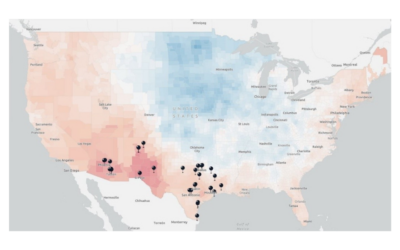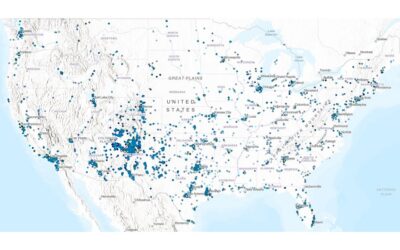By: Paul Noland, Of Counsel
Transformation of Cultural Attractions to Mixed-Use Developments
Historically, leisure venues, whether they be sports stadiums, theaters, amusement parks or zoos, were usually located in city center locations. The Bronx Zoo and Wrigley field come to mind. They were surrounded by shops, hotels, restaurants, apartments and were close to public transportation.
After World War II, that began to change. As cars became more popular, new leisure facilities began being located outside city centers, surrounded by large parking lots connected to interstate highways. For example, the Dallas Cowboys play their home games in Arlington, Texas, located about 20 miles from downtown Dallas. The New York Jets and New York Giants play in New Jersey. And the San Francisco 49ers play in Santa Clara, California, a whopping 43 miles from downtown San Francisco.
Today, the trend seems to be reversing. New leisure facilities are often located in city center locations as part of larger urban renewal projects. In 1981, the New Jersey Nets and New Jersey Devils began playing their games at the Meadowlands built literally in a swamp area in suburban New Jersey. Today, the New Jersey Nets are now the Brooklyn Nets, and the New Jersey Devils are the Brooklyn Devils. They play their home games in Brooklyn’s Barclays Center which is the hub of a major project still in development called Pacific Park. In fact, designers of the Barclays Center decided to cut in half the amount of on-site parking available to encourage attendees to use public transportation.
Another trend is green field developments that serve as an anchor for larger mixed-use developments. Battery Atlanta is the location of Truist Stadium, home of the Atlanta Braves, and serves as the centerpiece of a larger development including hotels, office space, restaurants, bars, and retail. The Pro Football Hall of Fame in Canton, Ohio opened as a stand-alone facility in 1963. Plans are now well underway for a large-scale development which will surround the existing Hall of Fame and will include a 200-acre mixed-use tourism development with many elements already opened. At Lake of the Ozarks, a new project called Oasis at Lakeport was recently announced with a targeted opening in 2024. The 20-acre site will include amusement rides, an amphitheater, marina, hotels, and a boardwalk.
While several of these examples are sports-related, other projects exist ranging from performing arts centers (the Dr. Phillips Center for the Performing Arts in Orlando, Florida for example) to museums to botanical gardens.
Advantages of Mixed-Use Developments
Mixed-use developments are not a new creation but are growing in popularity. They have several advantages over traditional development “silos” including:
- Efficient use of land
- Multiple tenants, each with the ability to generate traffic
- A more pedestrian-friendly environment
- Shared project risk with different organizations and companies being part of the project
Having a leisure attraction as part of a mixed-use development can be very appealing to developers. By their nature, they attract a large number of visitors for a relatively brief time, which is a great way to stimulate foot traffic for the rest of the complex. That phenomenon is sometimes called “pulsing”—bringing a large group of people to one place and then “releasing” them to enjoy other aspects of the community. A performing arts center, for example, brings thousands of patrons to the theater which spurs before and after theater meals, shopping, etc.
In addition to new green field projects, the mixed-use concept is being embraced by existing facilities including amusement parks, sports arenas, zoos, and other attractions. In these cases, existing facilities are using available, purchased, or redeveloped land to expand the offerings available.
- Polar Park Artic Wildlife Park in Norway, the world’s northern-most animal park, features bears, wolves, moose, and other northern dwelling animals. The park opened in 1994. In 2016 they added Wolf Lodge, a hotel located adjacent to the wolf enclosure providing extensive views of the wolves from every room. The building was formerly a barn which was converted.
- National Zoo and Aquarium in Australia is a privately owned facility. In 2014 they added Jamala Wildlife Lodge, an upscale boutique lodging offering located within the zoo grounds. It too features views of animals and gourmet dining.
- The TD Garden is a legendary sports arena and home to the Boston Celtics. A major urban renewal project, The Hub on Causeway, connects the Garden to a transportation center called North Station. It began its phased opening in 2019 and features office space, residences, retail space, and an upscale “food court” called Hub Hall.
Why Cultural Attractions Should Be Interested in Mixed-Use Development Trends
Leisure venue guests want seamless, hassle-free experiences. They want to experience multiple activities during their precious free time. Mixed use developments all over the world are capitalizing on this trend.
Cultural attractions have the same opportunities as any leisure venue. It takes foresight and planning but there are some important first steps to be considered:
- It all starts with the guests—Through guest feedback loops (existing satisfaction surveys, strategic plan surveys, focus groups, etc.), develop a sense of what activities and experiences your current guests would like to see. Don’t get frustrated if these only provide some basic ideas. Consumers are better at identifying incremental improvements in an experience, but this is still an important place to start.
- Master plan with a different lens—Look at your current master plan with an eye towards finding parcels of land that likely would NOT be used for traditional expansion of your facility. Are there smaller sites that could be used for third-party development of an F&B outlet, merchandise store, games area, etc.?
- Look beyond your berm—Examine land parcels that are contiguous to your property. Is there an opportunity to partner with the landowner on a joint development? For example, could a hotel addition close to your facility help increase attendance levels? Would you be willing to consider lending your name to the project, such as “the Hotel Name at the Main Street Zoo”? There are many economic considerations here, but it starts with identifying the types of development that would be positive for your zoo, aquarium, or botanical garden, and determining what kind of role you’d like to play in its development.
These steps can get you started. Engagement with the board of directors is critical. Developing a mixed-use element to your cultural attraction could evoke a strong reaction from stakeholders, both positive and negative. Education and thoughtful analysis can help to get everyone on the same page.





